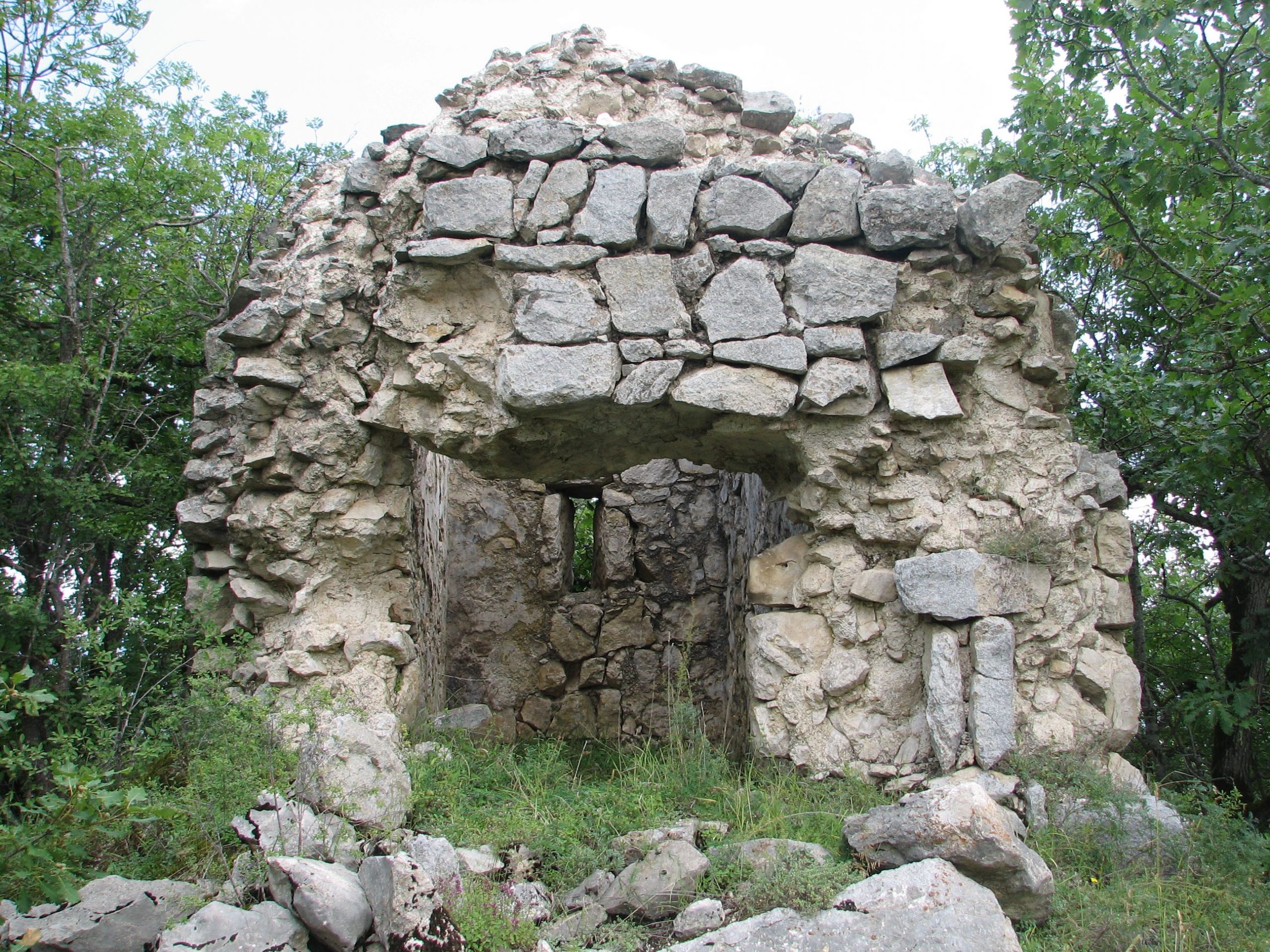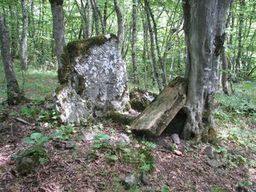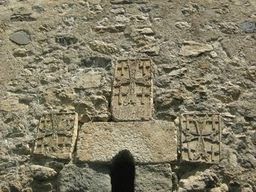| Image | Name of the monument | Location | Date Of Construction | Summary | Categories | hf:categories | |
|---|---|---|---|---|---|---|---|
| “Kkvi bun” Church | Askeran/ Avetaranots village (former Chanakhchi) | 12th-18th century | The monument is located on the top of a round, rocky hill rising near the vegetable plots. It is a single-nave, vaulted building, rather small in size (5.5 X 4.5 m), made of cracked stones connected with solid lime mortar. It probably served as a chapel. Now the monument is in a dilapidated condition, the central part of the district and the entrance part are destroyed. It does not have an accentuated tabernacle and stage and belongs to the type of sanctuary plat, which is very special to the Artsakh School of Architecture. The eastern part is distinguished only by one of the niches in the north and south walls, which were used for ritual items and ritual books. The chapel is surrounded by tombstones and khachkars, and traces of houses can be seen on the platform at the western foot, which indicates that there was once a desert monastery. The three preserved khachkars and the rock cross date back to the 13th-14th centuries. It is located on the south-western edge of the village, on the bank of Dashkhun … | Church, Religious monument | Visit | church religious-monument | |
| Shahnazaryan Family Cemetery | Askeran/ Avetaranots village (former Chanakhchi) | 18-19th century | The cemetery includes many tombstones from the 16th-18th centuries, including from … | Cemetery, Religious monument | Visit | cemetery religious-monument | |
| Khachkar “Ertashin Tap” | Askeran/ Avetaranots village (former Chanakhchi) | 13th century | This khachkar, carved on a white stone, is one of the relatively well-preserved examples typical of the Artsakh architectural school when images of contributors are depicted under the feet of the cross. There are probably two princes illustrated here, judging by their apparel, corresponding to the clothes of the ruling families of the XII-XIII centuries, with a high headdress, braided on both sides with a bunch of hair, a short tunic, and pointed-toe shoes. It is located 2 km south-west of the … | Khachkar, Religious monument | Visit | khachkar religious-monument | |
| P‘ap‘aderin / Papaderin (Փափադերին) Khachkars | Askeran/ Avetaranots village (former Chanakhchi) | 11th-12th and 16th-17th centuries | The place represents an old village, of which only the cemetery has been preserved, with two partially preserved khachkars. They are located 1.8 km south of the … | Cemetery, Khachkar, Religious monument | Visit | cemetery khachkar religious-monument | |
| “Sana Ełc‘i / Eghtsi” Church | Askeran/ Avetaranots village (former Chanakhchi) | 17th century | It is a small single-nave church, like most churches that have survived in Artsakh. | Church, Religious monument | Visit | church religious-monument | |
| “Hǝłc‘kot / Heghtskot” (Հղցկոտ) Bridge | Askeran /Avetaranots village (former Chanakhchi) | 19th century | Heghtskot is an arch bridge; the edges of the arch are framed with polished stones. | Bridge, Lay monument | Visit | bridge lay-monument | |
| “Kusanats Anapat” Monastic Complex | Avetaranots village (former Chanakhchi)/ Askeran | 13-19 cc | The fenced monastery, which includes a 17th-century church and khachkars belonging to earlier periods | Monastery, Religious monument | Visit | monastery religious-monument | |
| Askeran Fortress | Outskirts of Askeran city, in the lower part of Karkar river | 18th century | The fortress, built in the second half of the 18th century during the Khanate period, consisting of two parts-complexes, had a strategic role and significance. | Fortress, Lay monument | Visit | fortress lay-monument | |
| Church of St. Astvatsatsin | Askeran/Avetaranots village (former Chanakhchi) | 1651 | It is a diocesan three-nave basilica church, built of rough and hewn stones. | Church, Religious monument | Visit | church religious-monument |









